Mirella Sichirollo Patzer's Blog, page 27
September 23, 2013
Stigmata by Colin Falconer

Back Cover:
1205AD: Philip of Vercy sails away from the roasting
wasteland where he has passed the last year. As a Knight of the Realm, he has
fought the infidel in the Holy Land. Now, after twelve months of savage, bloody
warfare in the scorching sun, he is finally coming home to his castle, to
peace, and to his beloved wife. But France offers neither comfort or peace. His
wife has died in childbirth, his young son is dying of a wasting disease, and,
in the south, his Cathar countrymen are being brutally persecuted. When Philip
hears rumours of a healer in the Languedoc, a young woman blessed by God and
marked with Christ's Stigmata, he rides out on a desperate quest to save his
son. His journey takes him into a vision of hell that outstrips even what he
saw in Outremer. Disgusted by the senseless slaughter, Philip gradually becomes
embroiled in the Cathar cause. And then he finds his miracle: Fabrisse
Berenger, the beautiful, loving daughter of Cathar parents. She is bewildered
by her strange wounds, but Philip is fascinated by them... and more fascinated
by the serene goodness of Fabricia herself. Together, the pair must flee
persecution under cover of darkness - but they cannot hold off the Pope's
soldiers forever. Their destiny will be decided in the snows of the Black
Mountains where Fabricia and Philip must make choices not just to save their
lives, but their souls.
My Review:
In the year 1205, Sir Philip of Vercy returns home to France
after a grueling year as a knight fighting in the Holy Land only to learn that
his beloved wife is dead in childbirth and his newborn son is frail and sickly,
on the verge of death. Consumed by grief, he travels to Languedoc in search of
a miraculous healer named Fabricia Berenger, a nun, to save his son’s life. But
once in Languedoc, he finds himself thrust into the dangers of battle against
the Papal military who are waging war to eliminate the Cathar heretics. Fabricia
Bérenger receives visions from the Virgin Mary. Her devotion to her faith is
strong and along with her prophetic visions, she receives the Stigmata, open
wounds to her hands and feet that bleed like Christ’s wounds did on the cross.
Philip is plagued by his conscience and his future. Nothing is the same, death of
his wife, and all the killing in battle deeply affecting him. Fabricia’s
presence in his life affects him deeply as he is more and more drawn to love
her.
Stigmata by international bestselling author, Colin
Falconer, is an intricate story with rich characters and an intense plot that proved
to be an enthralling read. A touch of Catholic mystery, a broken hero who is
trying to rebuild his shattered life, and a heroine blessed/cursed with the
ability to heal that keeps her in constant turmoil. It was a turbulent time of
heresy, crusades, and the struggles to overcome devastation. Beautifully
written in typical Falconer style with plenty of snap and sharpness, and wonderfully
researched, I enjoyed every page of this book. Fast paced, sprinkled with
unique and unusual details, and with plenty of emotion, makes this a must read
for those who love the medieval period or books about the unexplained mysteries
of life. Loved, loved, loved this novel. Rivting!









Published on September 23, 2013 10:15
September 16, 2013
Hoyden of the Week

All hail to the girl gangs of school! These reform school beauties look thrilled that the summer is over and they can once more hang out together.
My own gang of friends (we've been together since we were 5 years old are still going strong today! We are nearing our 50th anniversary of friendship.
So reach out today and send a hug out to your long term girlfriends. Alone we are great, but together we are better!









Published on September 16, 2013 16:48
September 11, 2013
Hoyden of the Week

Ah yes, it's so hard these days to know what is good for you and what isn't. We are bombarded every day with new medical research determining foods that are good and food that is bad.
This week's hoyden seems to have figured it all out for herself. Can't say as I blame her. Who doesn't love a lovely glass of champagne or prosecco every now and then?
Enjoy you week ladies...Remember to let loose your inner hoyden loose every now and again.









Published on September 11, 2013 08:56
September 9, 2013
Child Prostitutes - Defloration Mania - The Eighth Circle of Hell by Gary Dolman

1871 Photo of a child prostitute
Inscription at the back reads:
Mary Simpson a common prostitute age 10 or 11 year.
She has been known as Mrs. Berry for at least two years.
She is four month with child.
I had never heard of the Defloration Mania that ran rampant in England during the Victorian era until I read The Eighth Circle of Hell by Gary Dolman. Basically, the Defloration Mania is child exploitation at its worst. It took place in London. Child brothels were in great abundance, preying on poor children or orphans because ten to fifteen year old children were all the rage back then.
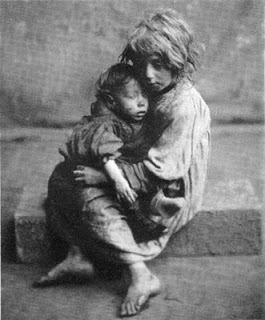
Quote by Rush, a Journalist, 1980:
"There were never enough 'voluntary
prostitutes' to meet the voracious Victorian demand. Consequently, enterprising
entrepreneurs established a system of obtaining 'involuntary prostitutes' Men
who wanted sex with little girls were prepared to pay a good price, and a
standard pricing system brought about twenty pounds for a healthy working-class
girl between the ages of fourteen and eighteen, a hundred pounds for a
middle-class girl of the same age; and as much as four hundred pounds for a
child from the upper class under age twelve..." The pain of rape for young girls was never a reason to limit sexual activity with them..but many child prostitutes were syphilitic by age eighteen."
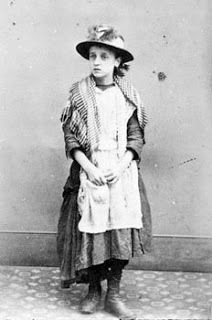
Quote by Edholm 1893:
"Pain became an essential ingredient for pleasurable sex...and since the defloration of very young girls can be excruciating, Victorians were obsessed with a defloration mania. The screams of children became indispensable, shrill torture was the essence of delight and many gentlemen would not silence a single Such a process netted the child into permanent prostitution. The result is that in nine cases out of ten, or ninety-nine out of a hundred, the child who is usually under fifteen, frightened and friendless, her head aching...and full of pain and horror, gives up all hope, and in a week she is one of the attractions of the house."
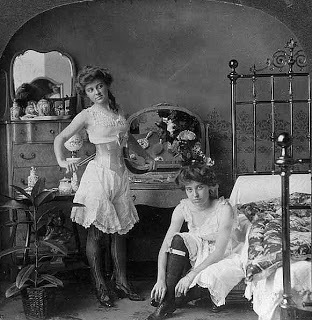
One of the most notorious madams or procuresses of the era was Mary Jeffries (1854–1907). She ran several brothels in London, catering to the city's royalty, elite businessmen, and high level politicians. She arranged the abduction of children by offering to watch them while parents went to collect luggage or purchase train tickets. By the time they returned, there was no sight of the child.
Quote by Terrot, 1960:
"There was no form of sexual vice for which this murderess did not cater."
Quote by Stead 1960 writing for the Pall Mall Gazette describing one of her houses:
"Flogging or birching goes on in brothels to a much greater degree than is generally believed. One of Mrs. Jeffrie's rooms was fitted up like a torture chamber...There were rings in the ceiling for hanging women and children up by the wrists, ladders for strapping them down at any angle, as well as the ordinary stretcher to which the victim is fastened so as to be unable to move. The instruments of flagellation included the ordinary birch, whips, holly branches, and wire-thonged cat-o'-nine-tails."
References: http://www.ancientworlds.net/aw/Journals/Journal/616148
If you want to learn more about the Defloration Mania, I just finished reading THE EIGHTH CIRCLE OF HELL by Gary Dolman, an outstanding fiction novel that describes the horrors that one young girl endured. Very poignant...Here's my review...

The
Victorian age is often held up as a shining era of British history, a time of
wealth and power, of civilisation and philanthropy. It was all of these. Yet it
was also a time of cruelty and depravity, where power and wealth were too-often
used for ill-purpose and exploitation. It was the time of the 'Defloration
Mania', where young girls were bought and sold like the slaves they became.
Elizabeth Wilson is an elderly woman who has spent a lifetime of grinding toil
and poverty in a workhouse. She fled there as a young girl, pregnant and
penniless, to escape her depraved uncle and his powerful friends. However,
advancing dementia has caused her to regress inexorably back in her life, to
the point where she is once again re-living the hellish memories of her life as
an orphaned child.
The
Eighth Circle of Hell' is a bleak study of the stark between the polite,
strictly ordered society of the Victorian age, and the utter depravity and
exploitation of the vulnerable it shielded. This story demonstrates how in the
furnace of shared adversity, enmities and friendships can be forged that will
last a lifetime, and which are more enduring than the boundaries of life and
death.
In Victorian England, Elizabeth Wilson is a very young
orphan, but the orphanage where she lives is not what it seems. It is run by
unscrupulous, debauched patrons who force the young girls, and sometimes boys, to
work as prostitutes. It is a brutal, no-holds-barred tale of Victorian England
and the Defloration Mania that gripped society during that era.
The story is told through flashbacks by the heroine
who is elderly and recalls the dark days of her childhood. It is a story about cruelty,
violation, betrayal, and helplessness. To say the book stirs emotions while
reading it would be an understatement – this story grips the reader with
horror, anger, misery, and cruelty. It is an unforgettable journey into a long
ago time that is not much different than today’s society.
This is the type of book that will stay with you
for many years. Readers will be distressed, captivated, and awestruck by this
tale. The author’s writing style is powerful and adds to the thrill the book
provides. This book is more than memorable – it is an important expose on the
cruelties faced by the sexual slave trade that still exists today. Bravo Gary
Doman. More books please!









Published on September 09, 2013 09:00
September 6, 2013
$.99 sale this weekend only
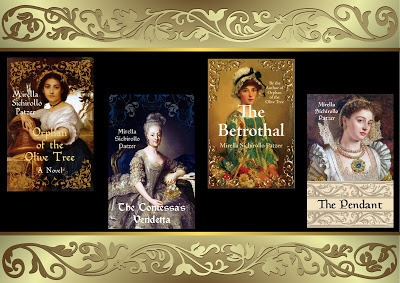
All four of my historical fiction novels are being featured for $.99 each this Friday and Saturday on Amazon.com, Amazon.ca, Amazon.co.uk, and all other Amazon international sites!
I hope you get a copy! Happy reading everyone!









Published on September 06, 2013 11:19
September 4, 2013
Beatrice d'Este - Duchess of Milan
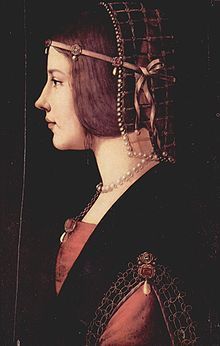
Beatrice d'Este
Beatrice d’Este, Duchess of Milan was the second daughter of Ercole d’Este and
his wife, Eleanora of Aragon. Her older sister was named Isabella and her brother was named Alfonso.
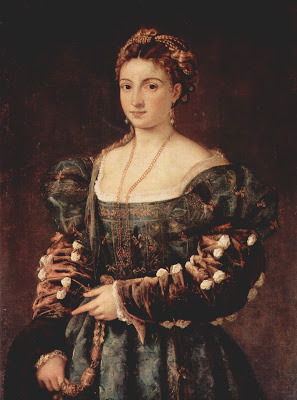
Isabella d'Este
The Este and Sforza families had always been on friendly terms. In order
to cement an alliance between their two families, Lodovico Sforza formally
asked Ercole d'Este to give him the hand of his daughter, Isabella, in
marriage. But because Isabella was already betrothed to Francesco Gonzaga, he
was offered 15 year old Beatrice’s hand in marriage instead. Ludovico, also known
as Il Moro made no objection and he betrothed the lovely Beatrice instead.

Lodovico Sforza (Il Moro)
Originally, Isabella and Beatrice were to marry in a double wedding, but
Francesco Gonzaga postponed the wedding several times. The double wedding went
ahead, but instead of Isabella and Francesco, the other couple was Beatrice’s
brother, Alfonso who married Anna Sforza. The wedding planner for the elaborate
celebrations was Leonardo da Vinci himself, a good friend of the d’Este family.
As wife of Lodovico Sforza, Duchess Beatrice reigned for six years over
the most splendid and luxurious court in all of Italy. Her charming personality,
her love of music and poetry, her exquisite taste in fashion and art, made her
one of the most endearing and attractive women of the Renaissance. It is these
qualities that catapulted her into the center of Italian political life.
The young bride flung herself with passionate delight into every
amusement, singing gay songs with her courtiers, dancing and hunting through
the day, outstripping all her companions in the chase, and laughing in the face
of danger.
She held her court in the famous Castello of Porta Giovia or in the
summer palaces of Vigevano and Cussago, palaces often decorated by Leonardo da
Vinci himself.

Sforza Castle in MIlano
She lived in a time alight with masquerades, sonnets, illuminated
books, and beautiful musical instruments like organs and viols. Scholars and
poets, painters and writers, gallant soldiers and accomplished cavaliers, all cast
themselves at Beatrice’s feet, striving how best they may gratify her fancies
and win her smiles. Young and old, they were alike devoted to her service, from
Galeazzo di Sanseverino, the valiant captain who became her willing slave and
chosen companion, to Niccolo da Correggio, who
laid down his pen and sword to design elaborate patterns for his mistress’s new
gowns.
She and Isabella exchanged many letters, sparkling with wit and gaiety
and overflowing with simple and natural affection. The letters are in great detail
and depict the highs and lows of her life. At the birth of her first-born son,
she rejoiced with proud delight, bragging about his size and growth and first
words. She grieved her mother’s loss and
was often wounded by her husband’s neglect or unkindness. Beatrice resented wrong
and injustice, and in her youth, may not have been careful with the feelings of
her rivals.
Despite her faults, she was kind, generous, human, and lovable. In 1492
she travelled to Venice as ambassador for her husband who desired to be named duke
of Milan in lieu of Gian Galeazzo Sforza. Beautiful and royally arrayed in
brocade and jewels, she stood up in the great council hall of Venice, to plead
her husband’s cause to be named duke before the Doge and Senate. This usurpation
was only legalized when Gian Galeazzo died. Beatrice participated with her
husband in council, received kings and emperors, and captured the heart of Charles
VIII.
And then suddenly the music and dancing, the feasting and travelling,
cease, and the richly coloured and animated pageant is brought to an abrupt
close.
At the age of 21, Beatrice died in childbirth. In a letter written hours
after her death, Ludovico informed his brother-in-law Francesco Gonzaga that
his wife, "gave back her spirit to God" half an hour after midnight.
Their child had been born at eleven at night and was a stillborn son.
Amid the tears and
lamentations of all Milan, she was borne to her grave in S. Maria delle Grazie.
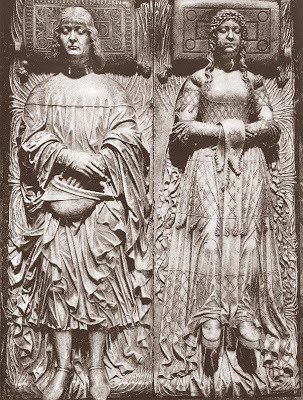
With her death, the whole Milanese state, that Lodovico Sforza had built up at
such infinite cost and pains, crumbled into ruin. Fortune, which till that hour
had smiled so kindly on the Lodovico and had raised him to giddy heights of
prosperity, now turned her back upon him. In three short years he had lost
everything–crown, home, and liberty–and was left to drag out a miserable
existence in the dungeons of Berry and Touraine.









Published on September 04, 2013 11:39
Beatrice d'Este - A special Gift
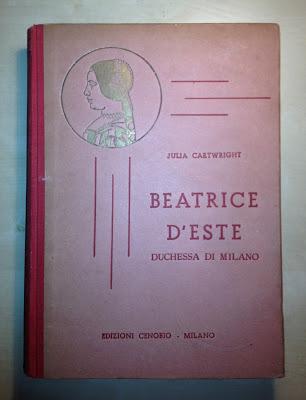
In last week's mail, I received a special package. At first glance, it was a book. Now, for me, receiving books in the mail is a regular occurrence, because I review books and am always receiving them in the mail from publishers.
But this book was special. It was from my cousin, Antonio Tosi, who lives outside of Milan, Italy. So with great excitement, I ripped open the envelope.
Inside was this beautiful old volume of Beatrice d'Este written by Julia Cartwright. It is a 1945 second edition.

I must have spent an hour flipping through its yellowed pages, eager to read the biography of this fabulous woman. But more importantly than that, the book brought back many memories of my paternal cousin, and the young boy I met when I was 12 on my first visit to Italy. And there is the picture of us in 1972 tearing up and down the neighborhood, my first time on a motorcycle, let alone driving one! My cousin had great courage, even then.

I returned to Italy 6 years later, when I was eighteen. During that visit, we exchanged gold medallions. At the time, I was wearing a gold cross on a necklace and he was wearing a modern version of the Madonna. Coveting each other's adornments, we traded. To this day, I wear this around my neck, rarely removing it. Here it is:

I have many more fond memories of my favourite cousin - eating at a Il Vecchio Canetto di Milano years ago and then wandering and sightseeing the streets of Milano afterwards.
Thank you Antonio (we call him Fabrizio!). The gift of the book is stupendous and it will be added to my special shelf of collector books. There'll be something in the mail coming to you very soon.
My next post will be the bio of Beatrice D'Este!










Published on September 04, 2013 11:37
September 3, 2013
Burial Rites by Hannah Kent

A
brilliant literary debut, inspired by a true story: the final days of a young
woman accused of murder in Iceland in 1829.
Set against Iceland's stark landscape, Hannah Kent brings to vivid life the
story of Agnes, who, charged with the brutal murder of her former master, is
sent to an isolated farm to await execution.
Horrified at the prospect of housing a convicted murderer, the family at first
avoids Agnes. Only Tóti, a priest Agnes has mysteriously chosen to be her
spiritual guardian, seeks to understand her. But as Agnes's death looms, the
farmer's wife and their daughters learn there is another side to the
sensational story they've heard.
Riveting and rich with lyricism, BURIAL RITES evokes a dramatic existence in a
distant time and place, and asks the question, how can one woman hope to endure
when her life depends upon the stories told by others?
Burial Rites can only be described as magnificent. It is a powerful, compelling narrative
of Agnes Magnusdottir, the last woman executed in Iceland in the early 1800's.
There
are few words to describe the beauty and passion of this novel. It is gripping,
packed with emotion, and poignant with humanity.
Agnes was a poor maid
who along with another woman and man, were sentenced to death for the brutal
murder of her master. As she awaits her beheading, she is sent to live with Jon
Jonsson, a government district officer, and his family. For the Jonsson family,
there was no choice in the matter. The accept Agnes with great reluctance. Assistant
Reverend Toti, a junior cleric, is assigned with the monumental task of spiritually
preparing Agnes for her imminent execution.
Through flashbacks,
the reader learns of Agnes’ ordeal and how she became involved with the murder.
As the months pass, the lives of Agnes, Toti, and the Jonsson family become entwined
as each character struggles to deal with Agnes’ death and the emotions stirred
by it.
Hannah Kent writes a beautiful,
heart-wrenching tale of a woman who is a victim of poor circumstances and the
effect she has upon the people surrounding her. The harsh realities of the Iceland’s
indigent women is exposed in this gritty tale. Strong visual writing make this
a novel that will stay with you long after the last page has been turned. It's
an emotionally intense and lovingly written story that is causing a great stir
in the publishing world. This is a must read!!!









Published on September 03, 2013 12:24
Kindle ebook sale $.99

All four of Mirella Sichirollo Patzer's Historical Fiction Novels are on sale this week in the Amazon Kindle Store. Each book is $.99 (USD) for the entire week. To get your copies, click on the links that apply!
Amazon.com
Amazon.ca
Amazon.co.uk
The books are also on sale on other International Amazon sites.









Published on September 03, 2013 09:48
September 2, 2013
The Suffragette's Song
A fun little ditty and spoof about those wonderful suffragettes who worked tirelessly towards equal rights! Brava ladies! Enjoy!


















Published on September 02, 2013 12:53



